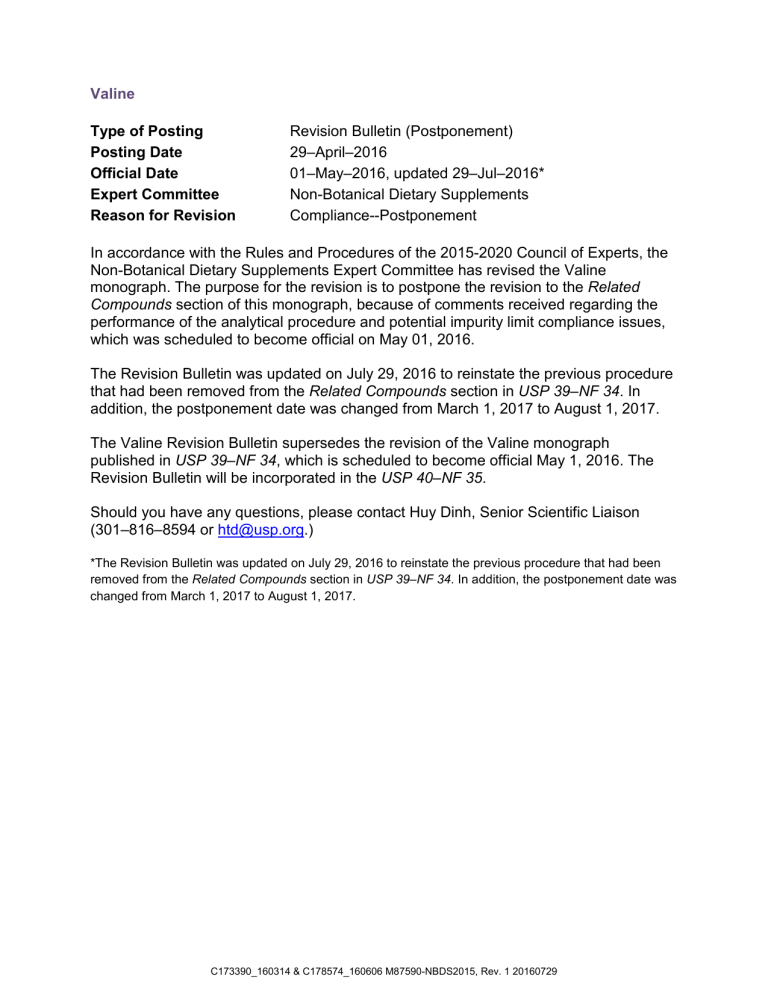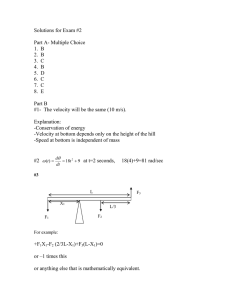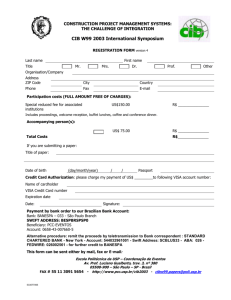
Valine
Type of Posting
Posting Date
Official Date
Expert Committee
Reason for Revision
Revision Bulletin (Postponement)
29–April–2016
01–May–2016, updated 29–Jul–2016*
Non-Botanical Dietary Supplements
Compliance--Postponement
In accordance with the Rules and Procedures of the 2015-2020 Council of Experts, the
Non-Botanical Dietary Supplements Expert Committee has revised the Valine
monograph. The purpose for the revision is to postpone the revision to the Related
Compounds section of this monograph, because of comments received regarding the
performance of the analytical procedure and potential impurity limit compliance issues,
which was scheduled to become official on May 01, 2016.
The Revision Bulletin was updated on July 29, 2016 to reinstate the previous procedure
that had been removed from the Related Compounds section in USP 39–NF 34. In
addition, the postponement date was changed from March 1, 2017 to August 1, 2017.
The Valine Revision Bulletin supersedes the revision of the Valine monograph
published in USP 39–NF 34, which is scheduled to become official May 1, 2016. The
Revision Bulletin will be incorporated in the USP 40–NF 35.
Should you have any questions, please contact Huy Dinh, Senior Scientific Liaison
(301–816–8594 or htd@usp.org.)
*The Revision Bulletin was updated on July 29, 2016 to reinstate the previous procedure that had been
removed from the Related Compounds section in USP 39–NF 34. In addition, the postponement date was
changed from March 1, 2017 to August 1, 2017.
C173390_160314 & C178574_160606 M87590-NBDS2015, Rev. 1 20160729
Revision Bulletin
Official August 1, 2016
Valine 1
.
Valine
C5H11NO2
[72-18-4].
117.15
L-Valine
DEFINITION
Valine contains NLT 98.5% and NMT 101.5% of L-valine
(C5H11NO2), calculated on the dried basis.
IDENTIFICATION
• A. INFRARED ABSORPTION ⟨197K⟩
ASSAY
• PROCEDURE
Sample: 110 mg of Valine
Blank: Mix 3 mL of formic acid and 50 mL of glacial
acetic acid.
Titrimetric system
(See Titrimetry ⟨541⟩.)
Mode: Direct titration
Titrant: 0.1 N perchloric acid VS
Endpoint detection: Potentiometric
Analysis: Dissolve the Sample in 3 mL of formic acid
and 50 mL of glacial acetic acid. Titrate with Titrant.
Perform the blank determination.
Calculate the percentage of valine (C5H11NO2) in the
portion of Valine taken:
Result = {[(VS − VB) × NA × F]/W} × 100
= Titrant volume consumed by the Sample (mL)
VS
VB
= Titrant volume consumed by the Blank (mL)
= actual normality of the Titrant (mEq/mL)
NA
F
= equivalency factor, 117.2 mg/mEq
W
= Sample weight (mg)
Acceptance criteria: 98.5%–101.5% on the dried basis
IMPURITIES
• RESIDUE ON IGNITION ⟨281⟩: NMT 0.1%
• CHLORIDE AND SULFATE ⟨221⟩, Chloride
Standard solution: 0.50 mL of 0.020 N hydrochloric
acid
Sample: 0.73 g of Valine
Acceptance criteria: NMT 0.05%
• CHLORIDE AND SULFATE ⟨221⟩, Sulfate
Standard solution: 0.10 mL of 0.020 N sulfuric acid
Sample: 0.33 g of Valine
Acceptance criteria: NMT 0.03%
• IRON ⟨241⟩: NMT 30 ppm
0.025 mg/mL of USP L-Isoleucine RS, 0.02 mg/mL of
USP L-Alanine RS, and 0.01 mg/mL of USP L-Phenylalanine RS in Diluent
Phenylalanine standard solution: 0.01 mg/mL of USP
L-Phenylalanine RS in Diluent
Leucine standard solution: 0.025 mg/mL of USP LLeucine RS in Diluent
Isoleucine standard solution: 0.025 mg/mL of USP LIsoleucine RS in Diluent
Alanine standard solution: 0.02 mg/mL of USP L-Alanine RS in Diluent
Sample solution: 5 mg/mL of Valine in Diluent
Chromatographic system
(See Chromatography ⟨621⟩, System Suitability.)
Mode: LC
Detector: UV 210 nm
Column: 4.6-mm × 25-cm; 5-µm packing L8
Column temperature: 25°
Flow rate: 1 mL/min
Injection volume: 50 µL
System suitability
Sample: System suitability solution
[NOTE—See Table 1 for relative retention times.]
Suitability requirements
Resolution: NLT 1.5 between leucine and isoleucine
Relative standard deviation: NMT 10.0% each for
phenylalanine, leucine, isoleucine, and alanine
Analysis
Samples: Standard solutions and Sample solution
Calculate the percentage of each amino acid impurity
in the portion of Valine taken:
Result = (rU/rS) × (CS/CU) × 100
rU
= peak response of phenylalanine, leucine,
isoleucine, or alanine from the Sample
solution
rS
= peak response of phenylalanine, leucine,
isoleucine, or alanine from the corresponding
Standard solution
CS
= concentration of USP L-Phenylalanine RS, USP
L-Leucine RS, USP L-Isoleucine RS, or USP LAlanine RS in the corresponding Standard
solution (mg/mL)
CU
= concentration of Valine in the Sample solution
(mg/mL)
Calculate the percentage of any other amino acid or
unspecified impurity in the portion of Valine taken:
Result = (rU/rT) × 100
rU
= peak response of any other amino acid or
unspecified impurity from the Sample solution
rT
= sum of all the peak responses from the Sample
solution
Acceptance criteria: See Table 1.
Delete the following:
Table 1
•• HEAVY METALS, Method I ⟨231⟩: NMT 15 ppm
• (Official 1-Jan-2018)
.
Change to read:
• RELATED COMPOUNDS
▲Buffer: 0.05 M monobasic potassium phosphate
Mobile phase: Acetonitrile and Buffer (65:35)
Diluent: Acetonitrile and Buffer (50:50)
System suitability solution: A mixture of 5 mg/mL of
USP L-Valine RS, 0.025 mg/mL of USP L-Leucine RS,
.
Name
Phenylalanine
Leucine
Isoleucine
Valine
Alanine
Any other amino
acid
Relative
Retention
Time
0.65
0.75
0.83
1.00
1.45
—
2016 The United States Pharmacopeial Convention All Rights Reserved.
C173390_160314 & C178574_160606 M87590-NBDS2015, Rev. 1 20160729
Acceptance
Criteria,
NMT (%)
0.2
0.5
0.5
—
0.4
0.5
2
Revision Bulletin
Official August 1, 2016
Valine
Table 1 (Continued)
Name
Any unspecified
impurity
Sum of other amino
acids
Relative
Retention
Time
—
—
Acceptance
Criteria,
NMT (%)
0.05
1.0
•(Postponed until 1-Aug-2017)• (RB 1-Aug-2016)▲USP39
•System suitability solution: 0.4 mg/mL each of USP
.
.
L-Valine
RS and USP L-Phenylalanine RS in 0.1 N hydrochloric acid
Standard solution: 0.05 mg/mL of USP L-Valine RS in
0.1 N hydrochloric acid. [NOTE—This solution has a
concentration equivalent to 0.5% of the Sample
solution.]
Sample solution: 10 mg/mL of Valine in 2 N hydrochloric acid
Chromatographic system
(See Chromatography ⟨621⟩, Thin-Layer Chromatography.)
Mode: TLC
Adsorbent: 0.25-mm layer of chromatographic silica
gel mixture
Application volume: 5 µL
Developing solvent system: Butyl alcohol, glacial
acetic acid, and water (3:1:1)
Spray reagent: 2 mg/mL of ninhydrin in a mixture of
butyl alcohol and 2 N acetic acid (95:5)
System suitability
Sample: System suitability solution
Suitability requirements: The chromatogram of the
System suitability solution exhibits two clearly separated spots.
Analysis
Samples: System suitability solution, Standard solution,
and Sample solution
After air-drying the plate, spray with Spray reagent,
and heat between 100° and 105° for 15 min. Examine the plate under white light.
Acceptance criteria: Any secondary spot of the Sample
solution is not larger or more intense than the principal
spot of the Standard solution.
Individual impurities: NMT 0.5%
Total impurities: NMT 2.0%• (RB 1-Aug-2016)
SPECIFIC TESTS
• OPTICAL ROTATION ⟨781S⟩, Procedures, Specific Rotation
Sample solution: 80 mg/mL in 6 N hydrochloric acid
Acceptance criteria: +26.6° to +28.8°
• PH ⟨791⟩
Sample solution: 50 mg/mL
Acceptance criteria: 5.5–7.0
• LOSS ON DRYING ⟨731⟩
Analysis: Dry at 105° for 3 h.
Acceptance criteria: NMT 0.3%
ADDITIONAL REQUIREMENTS
• PACKAGING AND STORAGE: Preserve in well-closed
containers.
Change to read:
• USP REFERENCE STANDARDS ⟨11⟩
▲USP L-Alanine RS
USP L-Isoleucine RS
USP L-Leucine RS
•(Postponed until 1-Aug-2017)• (RB 1-Aug-2016)▲USP39
USP L-Phenylalanine RS
USP L-Valine RS
.
.
2016 The United States Pharmacopeial Convention All Rights Reserved.
C173390_160314 & C178574_160606 M87590-NBDS2015, Rev. 1 20160729



